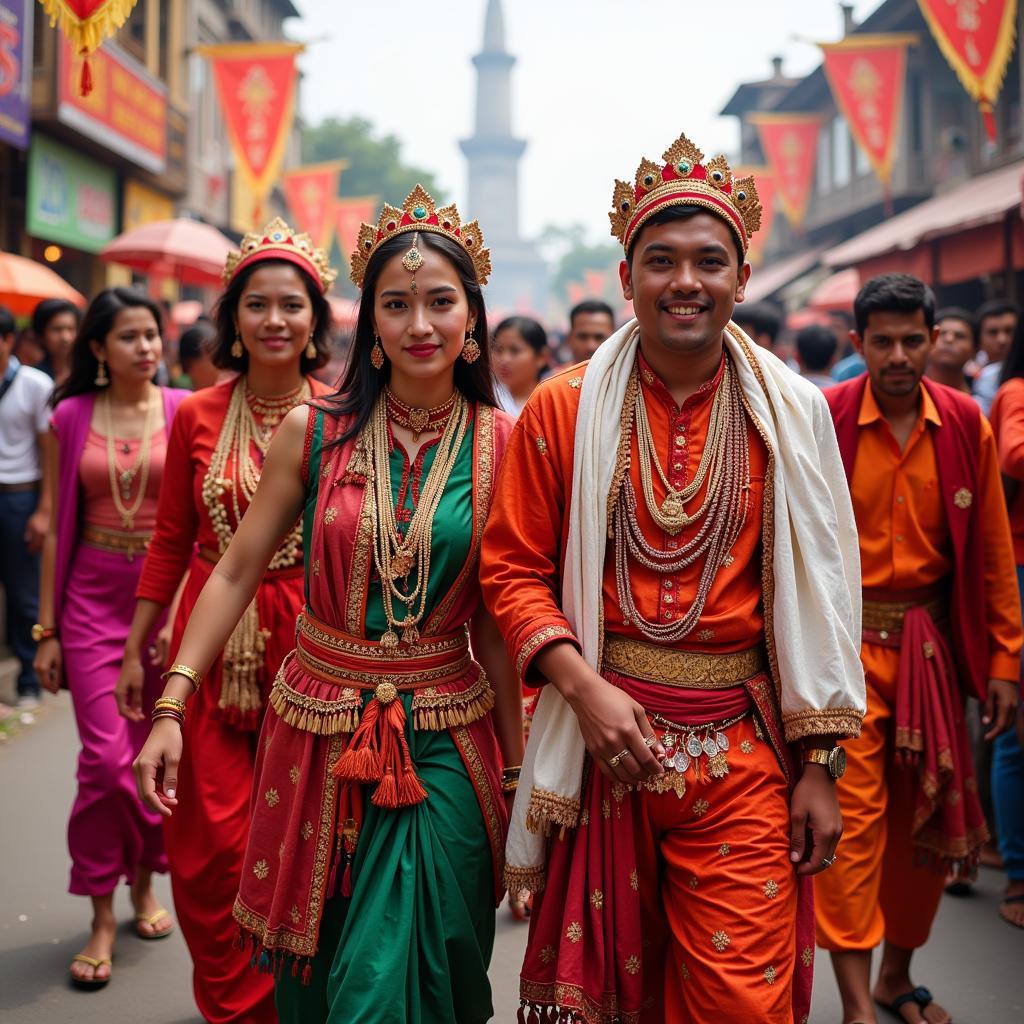Describing festivals is a common topic in IELTS Speaking tests, particularly in Part 2. This topic allows candidates to demonstrate their cultural knowledge while showcasing their English language abilities. Similar to describe a traditional custom in your culture, festival-related questions frequently appear across all parts of the speaking test.

Part 1: Introduction and Interview Questions
Common questions examiners may ask:
- Do you enjoy festivals?
- What’s your favorite festival?
- How do you usually celebrate festivals?
- Are festivals important in your culture?
Sample Answer (Band 8-9):
“I absolutely adore festivals, especially Lunar New Year, which is the most significant celebration in my culture. It’s a time when extended families come together to share traditional meals and honor our ancestors. The atmosphere is always incredibly festive with red decorations and traditional music.”
Part 2: Cue Card
Describe a festival in your country that you enjoy
You should say:
- What the festival is
- When it is celebrated
- What people do during this festival
- And explain why you enjoy it
Sample Answer (Band 8-9):
“I’d like to talk about the Mid-Autumn Festival, which is one of the most cherished traditional celebrations in my country. This festival takes place on the fifteenth day of the eighth lunar month, typically falling in September or October.
The festival has profound cultural significance as it celebrates the harvest season. People traditionally gather with their loved ones under the full moon, which symbolizes family reunion. During this time, the streets are beautifully adorned with colorful lanterns, creating a magical atmosphere.
What makes this festival particularly special is the way people celebrate it. Families come together to share mooncakes, which are delicate pastries filled with various ingredients like lotus seed paste and salted egg yolk. Children parade through the streets carrying bright lanterns, and there are often spectacular cultural performances.
For those interested in describe a time you experienced a cultural festival, this celebration perfectly exemplifies our cultural heritage.”
Part 3: Discussion Questions
- How have festivals changed in recent years?
- Do you think traditional festivals will survive in the future?
- What’s the role of social media in modern festival celebrations?
Sample Answer (Band 8-9):
“Traditional festivals have undergone significant transformation in recent years. While the core values and customs remain intact, the way people celebrate has evolved considerably. Social media has played a pivotal role in modernizing these celebrations, making them more accessible and shareable globally.
Speaking of cultural evolution, describe a local festival that is celebrated in your area demonstrates how traditions adapt while maintaining their essence.”
Key Vocabulary and Expressions
- Cultural heritage /ˈkʌltʃərəl ˈherɪtɪdʒ/: The legacy of physical artifacts and intangible attributes
- Time-honored tradition /taɪm ˈɒnəd trəˈdɪʃn/: A practice that has existed for a long time
- Festivities /fesˈtɪvɪtiz/: Celebration activities
- Cultural significance /ˈkʌltʃərəl sɪɡˈnɪfɪkəns/: Important meaning in a culture
- Commemorative /kəˈmemərətɪv/: Serving to remember or honor
Examiner’s Tips
- Use specific examples and personal experiences
- Demonstrate awareness of cultural aspects
- Include descriptive language and varied vocabulary
- Structure your response logically
- Show enthusiasm when discussing festivals you enjoy
For more insights on cultural celebrations, explore describe a holiday tradition in your culture.